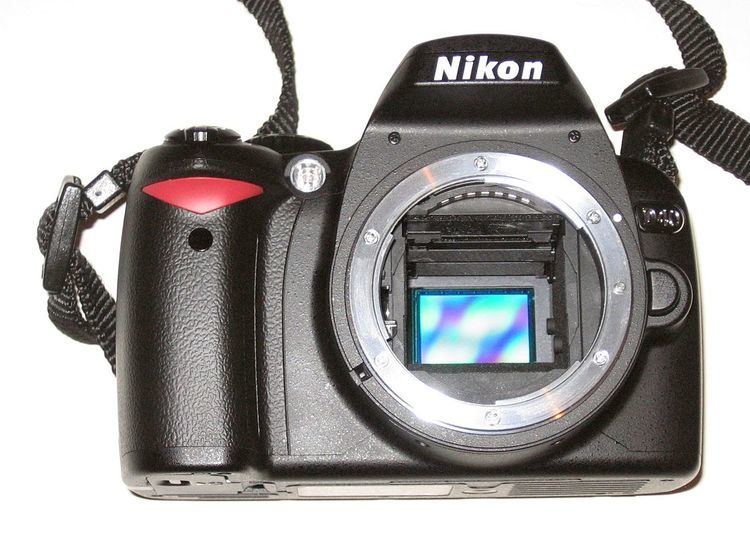 | ||
The Nikon DX format is an alternative name used by Nikon corporation for APS-C image sensor format being approximately 24x16 mm. Its dimensions are about 2⁄3 (29 mm vs 43 mm diagonal, approx.) those of the 35mm format. The format was created by Nikon for its digital SLR cameras, many of which are equipped with DX-sized sensors. DX format is very similar in size to sensors from Pentax, Sony and other camera manufacturers. All referred to as APS-C including the slightly smaller Canon cameras.
Contents
- Implications
- Real sensor size
- Lenses for Nikon DX format
- Current Vibration reduction VR lenses in DX format
- References
Nikon has produced 23 lenses for the DX format, from macro to telephoto lenses. 35mm format lenses can also be used with DX format cameras, with additional advantages: less vignetting, less distortion and often better border sharpness. Disadvantages of 35mm lenses include generally higher weight and incompatible features such as autofocus with some lower-end DX cameras. Nikon has also produced digital SLRs that feature the larger Nikon FX format sensor that is the size of the 135 film format.
In 2013, Nikon introduced a high-end compact camera with a DX-sized sensor, the Nikon Coolpix A, featuring an 18.5 mm lens.
Implications
The 1⁄3 smaller diagonal size of the DX format amounts to a 1⁄3 narrower angle of view than would be achieved with the 135 film format (35 mm film or FX format), using a lens of the same focal length. Strictly in angle-of-view terms, the effect is equivalent to increasing focal length by 50% on a 135 film camera, and so is often described as a 1.5x focal length multiplier.
This effect can be advantageous for telephoto and macro photography as it produces a tighter crop without the need to increase actual focal length. However it becomes disadvantageous for wide angle photography as a wide angle lens for 135 film effectively becomes a normal lens for the DX format (e.g. 28 mm x 1.5 = 42 mm 135 film equiv.). This has led to the increased development of the DX format-specific lenses for the Nikon F-mount. Since these lenses do not need to cover the 135 film area, they are smaller and lighter than their 135 format counterparts of equal angle-of-view. The production of DX-specific lenses has also enabled the production of affordable wide angle lenses for the format (e.g., 12 mm), whereas costly ultra-wide angle lenses from the 135 format were formerly required.
When DX format lenses are used on 135 format cameras, vignetting often occurs, as the image circle does not cover the entire area of the 135 format.
Real sensor size
Nikon uses DX format sensors of slightly different sizes, although all of them are classified as APS-C (crop factor more than 1.3 and less than 1.7):
